Back in 1988, a British mountaineer penned down a book named, “Touching the Void,” narrating his real-life experience in the Peruvian Andes. The book was not much of a success then. In a strange turn of events, when another writer came up with a similar book named, “Into Thin Air,” the sales of the former started to elevate, that too more than before.
How did this happen?
The credit goes to Amazon’s recommendation engine. The avid readers who searched for “Into Thin Air” were suggested “Touching the Void” too. The positive reviews and feedback, in turn, became the reason behind the surprising success of the book that was long forgotten. That is the power of a product recommendation software.
This technology has proved to be a blessing for Digital Commerce retail stores as it is a proven tool for adding up and multiplying sales like never before. In simple words, it is a tool for maximizing profits by personalizing the user experience.
This is a simple success story of any eCommerce store in a few words: Do not ask the customers what they want, instead, show them!
What is a Product Recommendation Engine?
A product recommendation engine is a system that helps offer a personalized experience to every individual customer. It mines data and filters the product listings in accordance with what they would like. It is pure calculated science and no hit-and-trial here.
31% of eCommerce website revenues come from Product Recommendations –
On the technical side of things, product recommendation engine algorithms are used to mine customers’ purchase histories, browsing data, reviews, and feedback data to get a perspective of their mindset. Based on this information, the online recommendation engine delivers content that aligns with the customers’ wants and needs, instead of trapping them in the paradox of choice.
This intelligence is the key to analyzing customer behavior to drive conversions in the end. Contrarily, if you avoid its importance, you are likely to lose out on business.
The Goals of Building Recommendation Engines
The four goals of a recommendation engine software that should be your ultimate agenda, include:
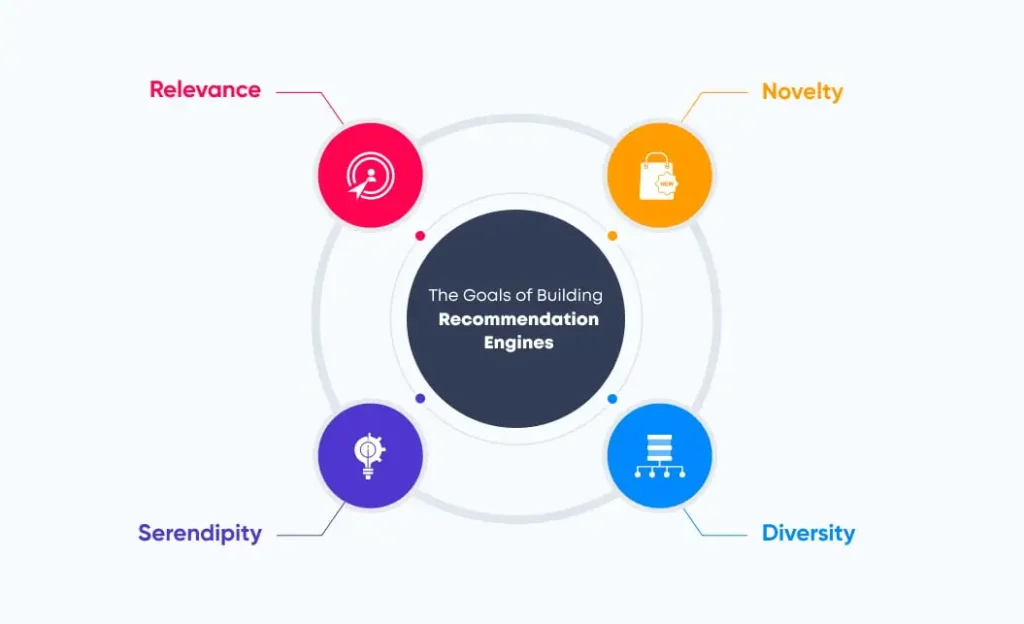
- Relevance
Recommendations made should be relevant to the user, i.e., they should invoke their interests.
- Novelty
Your business will create more value if the customers are recommended items they have not seen or used before, but are similar to the items they have bought before.
- Serendipity
Your business will create more value if the customers are recommended items they have not seen or used before, but are entirely different from what they might have bought before. Only the concept is the same. Here, the probability factor steps in.
- Diversity
Recommending similar items to users is not always helpful. Consider giving recommendations that do not relate to their past purchases.
Difference Between Recommendation Engines and Personalization
A recommendation engine is merely a tool that facilitates personalization. Where personalization denotes certainty, a recommendation is a prediction.
For example, a user buys groceries from Amazon every month. The next time they log-in the app, the usual grocery items get suggested. That is personalization, which means reducing the customer’s effort to look for and add items to the cart.
In short, is the result of their preferences, and there is no surprise factor in it.
On the other hand, if the same user is suggested an item related to their previous purchases, but something they never bought before, but are likely to show interest in, equates to a recommendation.
A recommendation is a result of predictive modeling that suggests something that users might like. It is similar to surprising the customers and making them feel empowered and boosting sales in turn.
How Does a Recommendation Engine Work?
Here are three approaches that are followed for building recommendation engines.
- Collaborative Filtering
If a person with a similar profile and preferences bought “this,” it is likely that you will like and buy it too. So, lets’ recommend it.
Based on user similarity, collaborative filtering is about clustering groups of profiles with similar preferences, search histories, and buying habits into a single set and analyzing their behavior. The data is then used to predict items that a user might be interested in. Let us take an example.
Assume there are two different shoppers X and Y. X has purchased a table, a chair, and a lamp in the past. Whereas Y has bought a table and a chair in the past. Their purchase history puts them in the same group. So, the recommender system would analyze the data and the pattern and would suggest a lamp to Y as well. This is the collaborative filtering method.
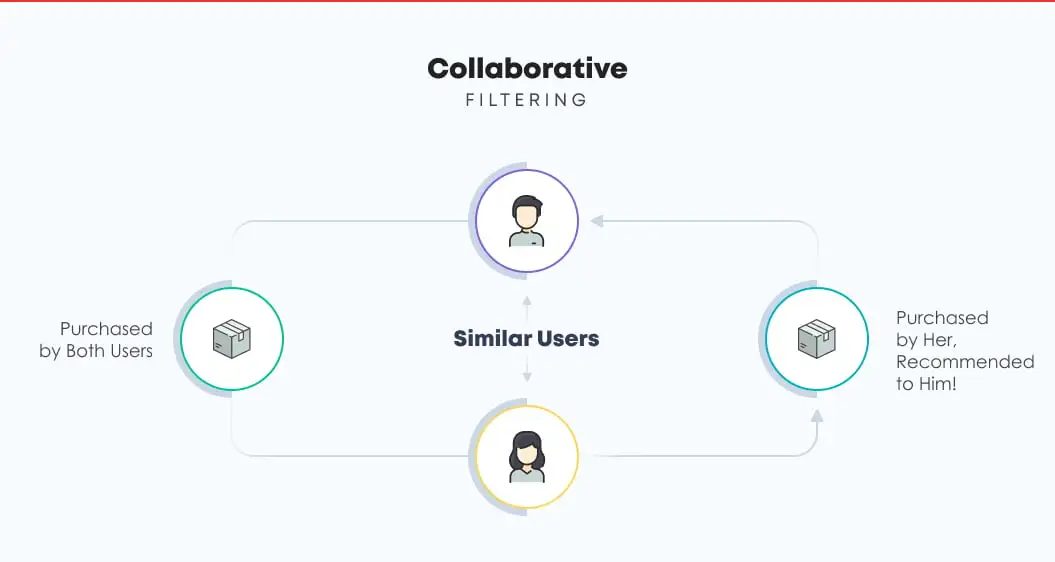
- Content-Based Filtering
Focuses on the individual buyer. A customer’s likes and preferences are mapped with product features to offer recommendations.
In content-based filtering, two things are essential, i.e., data about the product and a customer profile. The product should have tags such as a name, description, and relevant keywords attached to it. And, a user profile should exist that is created based on their likes, purchase history, and browsing data.
Finally, the respective product and user repositories are mapped to recommend what a user would like.
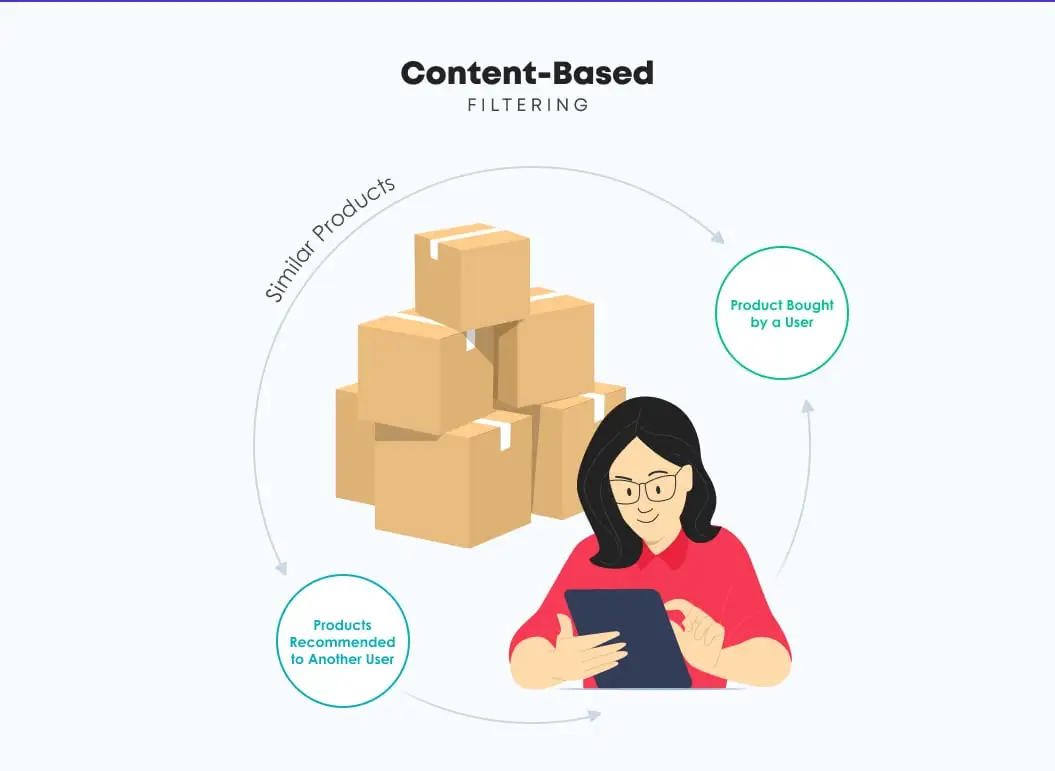
- Hybrid Recommendations
A hybrid approach combines the power of both — collaborative filtering and content-based filtering, i.e., the CB-CBF approach.
A hybrid recommendation engine merges the inputs from what it gains from collaborative filtering and content-based filtering, to offer a better and a fool-proof recommendation that would not go “unclicked.” It is a product recommendation engine that is best suited for eCommerce platforms that deal with massive volumes of data and need to deal with scalability issues.
Collaborative Filtering helps form a reduced dataset of users who like and buy similar products, and content-based filtering helps match the products’ feature tags with the deduced set of user profiles. In short, there are no loopholes.
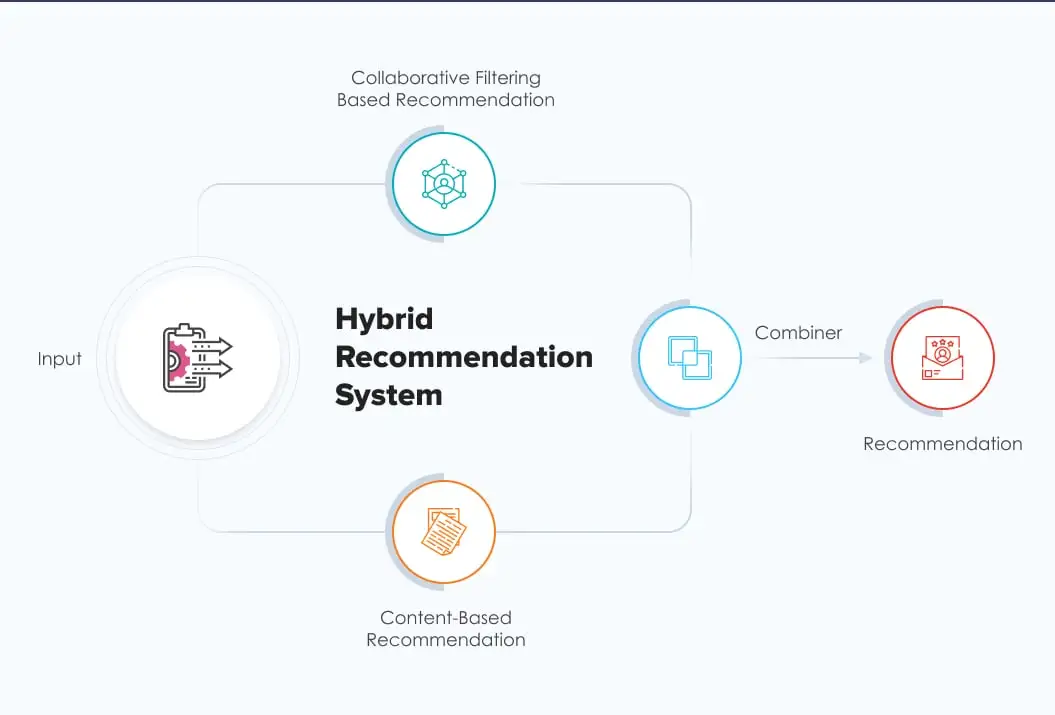
What are the Benefits of Recommendation Engines?
Building a product recommendation engine for e-commerce websites will cost you money. It will cost you time, as well. So, why do all the hard work?
Well, the benefits a product recommendation engine provides to your business are above all. Its advantages will outweigh the cost of its implementation in the long run. Here’s how:
- Increased User Engagement
User engagement is at the heart of every eCommerce solution. When recommendation engines provide users’ suggestions based on their likes/dislikes, they feel more connected to the service.
For example, when a user, John, adds an iPhone to the cart on Amazon. Its recommendation engine provides him various suggestions on the product page itself:
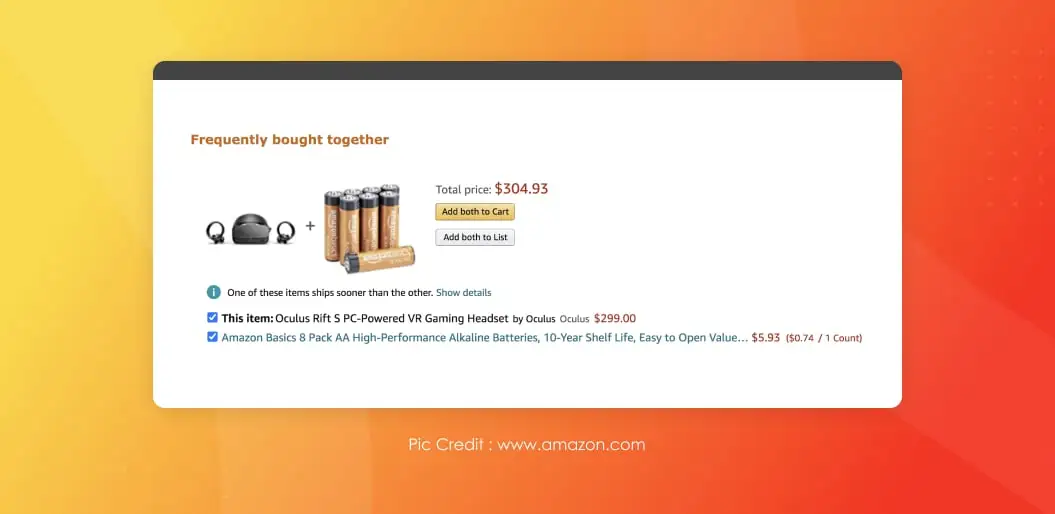
The website uses recommendations as a marketing tool on its web pages to attract users to browse more products. It suggests various products that a user might need depending on what he is likely to purchase (the item already in his cart).
When John buys an iPhone, he will probably need a case and screen protector for the phone. So, the only goal of the “Frequently bought product” section is to engage customers on the website and lure them into buying the combo. Using this data, the recommendation engine will then target the user John via email to keep him engaged with the offers.
Along with increasing the user engagement on the website, the product recommendation engine is also increasing the average order value here by up-selling and cross-selling products — another reason why we need recommendation systems.
- Reduced Churn & Personalized App
Content
When buying a product, we often seek recommendations from our near and dear ones. Similarly, while shopping online, users trust the product’s ratings and reviews as much as personal recommendations.
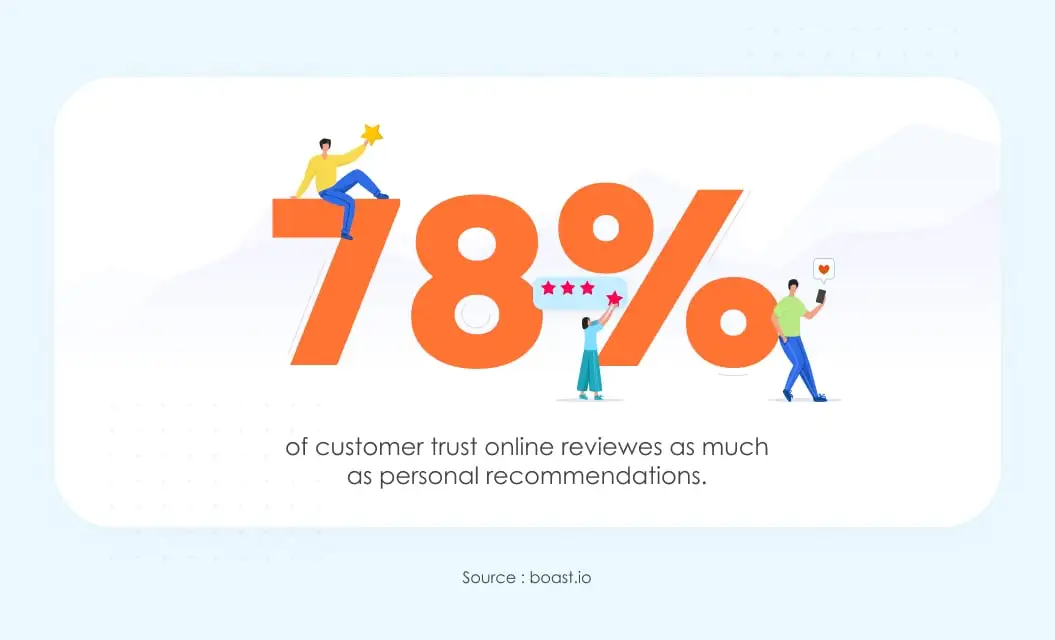
For making an informed decision, they want to know what previous buyers have to say about the products. A product recommendation engine eases the work of finding an excellent product for users.
For example, suppose John now wants to buy a T-shirt on your eCommerce store and lands on a product page with low user ratings and negative reviews, he will feel compelled to put his money somewhere else.
However, the product recommendation model can now provide him personalized suggestions (based on his browsing history) of products having high ratings. Now, when John sees the T-shirt of his favorite brand with good ratings and reviews, he will feel less stress and is likely to browse more products in the same category.
Here, the product recommendation engine turned your almost churned customer into a satisfied visitor (if not the buyer) by providing him a personalized feed.
Providing discount coupons and offers are other effective yet expensive options for re-engaging customers, and they can be used with recommendations in personalized user experiences.
- Increased Sales and Revenue
As mentioned earlier, brands can use recommendation engines in different situations to tackle eCommerce challenges, leading to more revenue and increased sales
The product recommendation engines are a way to up-sell and cross-sell products based on the user’s interests, likes, and dislikes. According to McKinsey, these techniques are known to increase sales of a business by 20% and profits by 30%. Such offers also create value for the customers by facilitating unexpected discovery of available and useful products.
The eCommerce users might not use these offers immediately, but they remain in the back of their minds for a long time. At the right moment, if brands follow up via emails, social media, or by displaying the same offers via online ads, the chances of users coming back and making a purchase increases, leading to increased revenue.
Now that we know why a recommendation system is important for your website, let’s see some top examples of recommendation engines.
3 Amazing Recommendation Engine Examples
Here are top Recommendation Engines examples to take some inspiration from:
Amazon
Amazon is a perfect example of a recommendation engine. When browsing Amazon for online shopping, you will see different recommendations on every page, device, channel, that are created using dozens of alluring and innovative strategies to lure customers.
Its recommendations take endless forms to capture sales and increase revenue. For example, it provides recommendations by comparing similar products, combos and urges users to sign-in when they log out. Thus, it uses recommendations as a weapon for killing many birds at the same time.
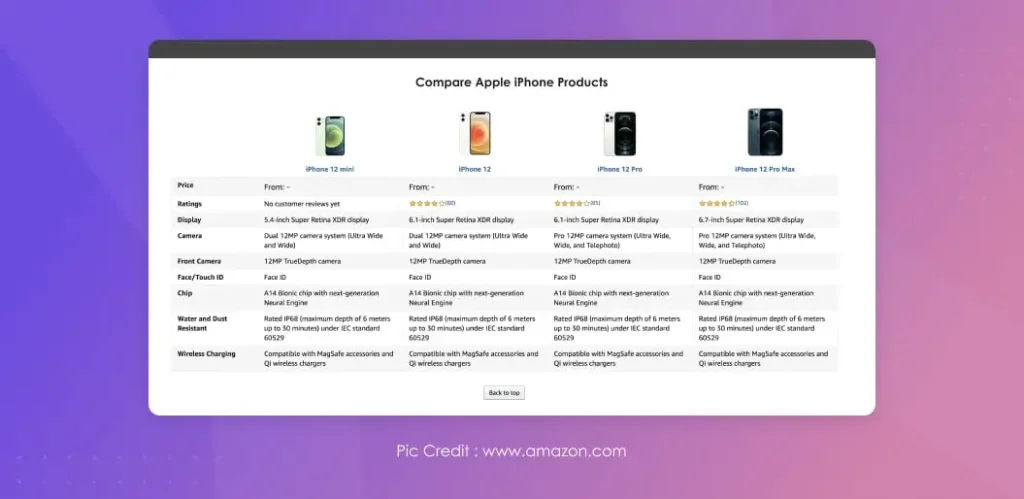
By taking some lessons from this best product recommendation engine, brands can stand out in the digital commerce market and reap more generous benefits, seeking a fair market share for themselves.
Netflix
As per statistics, Netflix’s 80% stream time is achieved through personalization using the Recommender System.
Have you ever thought about how Netflix comes up with such precise recommendations for its more than 100-Million subscribers?
Well, it’s not Netflix. It is artificial intelligence, data science, and recommendation engine machine learning behind the scenes that guess what a user wants to watch next depending on the streaming history. These emerging technologies help the Video streaming apps personalize every one of its subscribers’ experience and draw Billions in revenue – one of the brilliant recommendation engine examples.
Spotify
Not just eCommerce and OTT, the music industry also benefits from recommendation engines and machine learning. Spotify is one of the best examples of music streaming apps that use machine learning to provide recommendations to its users in various ways.
Every week, 100 Million plus subscribers receive a playlist tailored to them on Spotify. This personalized list contains around 30 new songs for users that they will probably enjoy. A number of users embrace this list and listen to recommended songs as it increases their exposure to music.
The recommender system of Spotify also provides suggestions for users based on their interaction with the app — the songs they skip, listen to, add to the playlist, the artists they like, and listen to the most.
Product Recommendation Engines – Making Money or Creating Value?
What Should be: The purpose of an eCommerce recommendation engine – Bring value to the customers while making revenues in turn.
The Reality: Do what everyone else has been doing, recommend products that customers may or may not need, who cares unless we are making money.
So, if you own an eCommerce business or are thinking of building one, you need to do things differently. In simple words, do not follow the herd, be your own kind of unique while keeping track of the best recommendation engine practices. Because, when you empower the customers, revenue growth follows without you having to stress about it.
To get a broader picture, here are some common issues with the online recommendation engines today.
- Reading the Minds of New Users
You have a newly registered customer, who maybe has heard about you from a friend or maybe has clicked on your carousel advertisement on social media platforms. What would you recommend them? There is no prior data on the user, and their preferences are unknown. In technical terms, this is known as a cold start problem.
You see, first impressions should always be right, and ignoring these first-time customers can be a massive mistake on your part.
According to a Statista report, 2.58 percent of eCommerce website visits converted into purchases as of Q2 2019, which is less as compared to Q1 2019 conversion rate of 2.72%. Have a look for yourself.
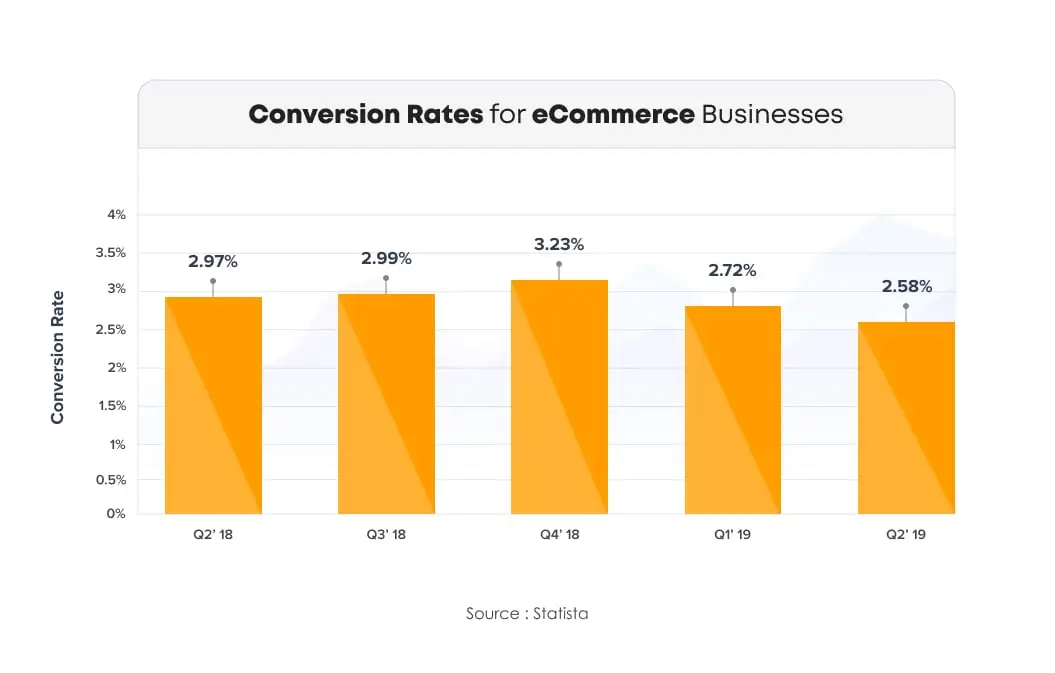
So, how do you address the cold start problem?
The best recommendation engines start by recommending their best-reviewed products, or let’s say the best selling products to these new guests. In this case, the probability of them liking it is high. Another approach could be to take advantage of the season & festivities. Like, if it’s Christmas time, the chances are that they might be interested in holiday shopping.
Or you could build a recommendation engine that goes about tracking the geolocation data of users, such as their location and device used to personalize product results. Once you realize these factors, you will notice how effortlessly visitors get converted into buyers.
- Missing the Fact that Everyone is Unique
A customer is scrolling through prom dresses on let’s say some X eCommerce platform. While she is scrolling through, a collaborative filtering result pops up, which says;
“This is a popular dress, 1000 something people have already bought this.” While the lady was looking for some unique dress, would she want the same dress that has already been bought and worn?
The problem with the product recommendation tool is that the recommendations are based on how people are like each other, and not on how they are unique in their own way. Everyone has a different taste and preference, and presenting them with similar suggestions might not be a good idea.
The solution is simple, focus on building a user-centric or a personalized recommendation engine that celebrates uniqueness over commonality. That might be a long journey down the road, but offering this kind of customer experience would be worth it. Think about it.
- The Toilet-Seat Problem
Yeah, it sounds absurd, right? But, it is a real problem that an Amazon customer reported. See it for yourself.
If a customer searches toilet seats on the on-site search bar and buys it, that doesn’t mean they need it again after a week. Such eCommerce recommendation engines make a customer doubt your credibility. Why commit such a mistake after all.
So, the simple fix would be to set a time interval for the recommendation so that they stay for a particular period and fade away automatically.
Or, a better approach could be to stop suggesting the items that have already been ordered. Instead, unique items should be more of a focus, like suggesting items that would even surprise the customers. That would make them feel empowered while bringing more value to your business in turn.
Tip: If the customer has bought an ordinary toothbrush, recommending them to try an electric toothbrush would be valuable, i.e., same product, but different technology.
Conclusion
A product recommendation engine is the one that mines accurate customer data and presents them with products that have a high chance of making it to their shopping cart. The product recommendation technology helps build strong relationships between businesses and customers.
And, in a world where the fifty-nine percent of 16-36 year-olds head to Amazon before any other eCommerce website, you need to start thinking differently. It is high time to build a recommendation engine that causes disruption and proves to be a game-changer. Only then can you think of making a difference that would count.
SHARE THIS POST
Table of Contents
Related Resources
- eCommerce App Development Cost: Budgeting In-Depth Guide
- 13 Differences Between B2B and B2C eCommerce Websites
- Top 10 eCommerce Challenges and Easy Ways to Overcome Them
- 3 Types of eCommerce Business Models That Work in 2024
- eCommerce for Business: Is eCommerce Applicable for All Business Types
- eCommerce Customer Journey Mapping - The Secret to Higher Conversion Rates
- What is Headless Commerce? The Ultimate Guide
- Top 15 eCommerce KPIs to Track the Performance of Your Online Business
- Why Your Business Needs a Mobile eCommerce App
- Omnichannel Retail Strategy: A Comprehensive Guide
- Omnichannel vs Multichannel Retailing: The Complete Guide
- What is eCommerce Order Fulfilment? (And 6 Steps to Improve the Process)
- PCI Compliance: Everything You Need To Know
- The BEST Guide to eCommerce Personalization
- 12 Essential Factors for Choosing the Best eCommerce Platform
- The Ultimate Guide to Product Information Management (PIM) Systems for Ecommerce
- eCommerce Replatforming: Challenges, Benefits, and Best Practices
- The Ultimate Guide to eCommerce Security
- Top 13 eCommerce Trends in 2024
- How Voice Search will Transform the Future of eCommerce
- What is Web Accessibility (And Why it Matters for Your eCommerce Business)



